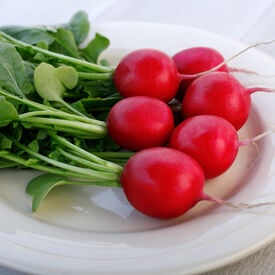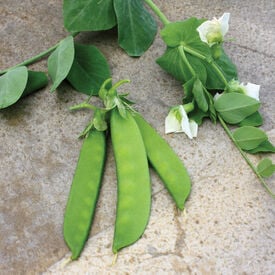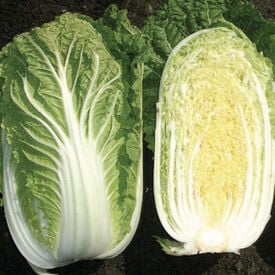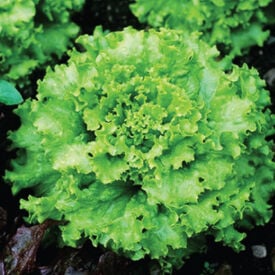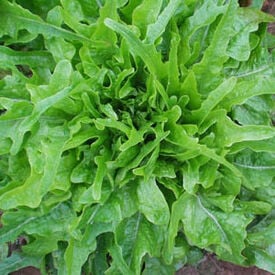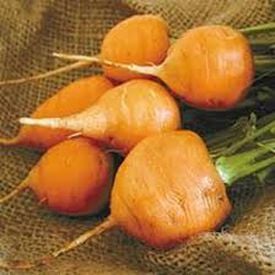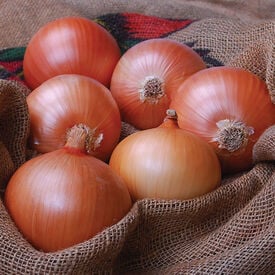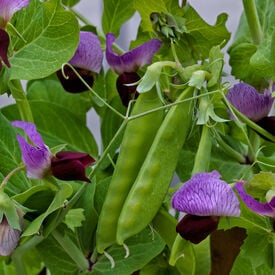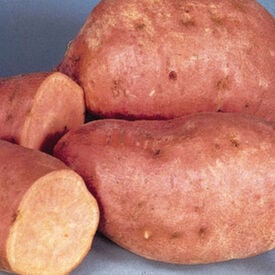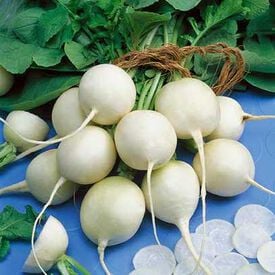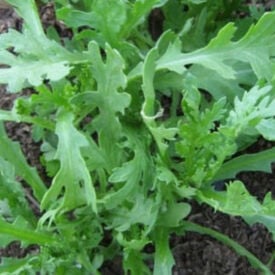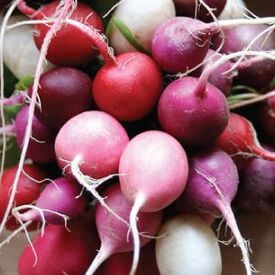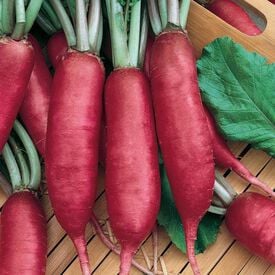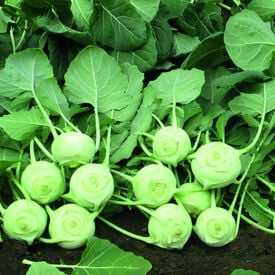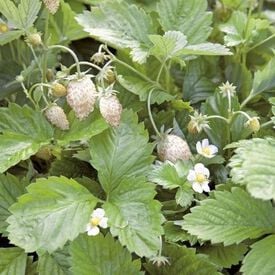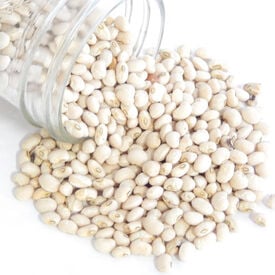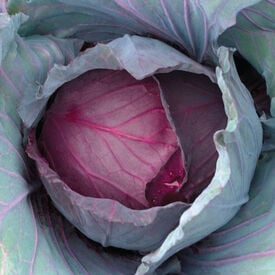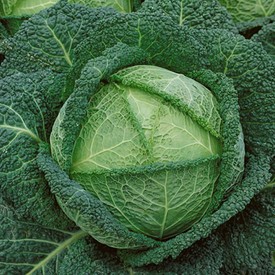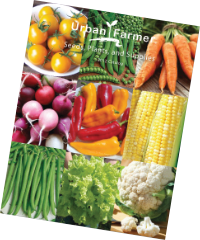Crunchy Crimson radish is a high yielding root with superior quality and uniformity. These roots have bright red skin with excellent interior quality and are very slow to develop pith. Crunchy Crimson grows well under cool conditions.
Little SnowPea White produces dwarf-sized vines with beautiful purple flowers. This pea plant is tiny yet productive and does well in small gardens or containers. The pods mature early and have a crunchy bite. Plants will reach a maximum height of 24 inches. For pea shoots, matures in 10 days. Expect slender, tight greens with minimal side branching, upright habit, and ease of harvest and stack.
China Star is a high producing and uniform Chinese cabbage. Grows large heads with a dark green exterior and dark yellow interior. It is slow bolting. China Star performs well in all Chinese cabbage planting slots.
Grand Rapid TBR lettuce is a versatile variety derived from the classic Grand Rapid lettuce, known for its resistance to diseases like downy mildew. Originating in the early 20th century, this loose-leaf type features frilled, light green leaves that form a rosette, offering both beauty and texture. The flavor is crisp and mild, making it a delightful addition to salads and sandwiches. Harvesting can begin around 45 days after planting, with the option to pick individual leaves for a continuous supply or to cut the entire head when fully mature. Grand Rapid TBR lettuce thrives in cooler climates and prefers well-drained soil, making it an excellent choice for both spring and fall gardens, particularly for home gardeners seeking a reliable and flavorful crop.
The Royal Oakleaf is a long standing oak leaf lettuce that has good heat resistance. This variety develops beautiful rosettes of deeply lobed sea green leaves. Royal Oakleaf is an improved version of the standard oak leaf lettuce. The Royal Oakleaf has excellent flavor, crispness and tenderness that is one that cannot be beat!
Thumbelina carrots are tender and sweet with no need to peel! It is the perfect bit size for fresh eating, stews and salads. Thumbelina's small size makes it a great choice for heavy or shallow soils or containers. No wonder it is an All-America Selections Winner from 1992!
Avalon is a very sturdy, yet flexible, late intermediate Spanish onion. This variety allows a smooth transition from intermediate to long day varieties. Growers enjoy the easy growth, the size potential, single centers, and the nice firm bulb that it produces. The grower also has the option of mechanical harvesting with Avalon.
Little SnowPea Purple produces dwarf-sized vines with beautiful purple flowers. This pea plant is tiny yet productive and does well in small gardens or containers. The pods mature early and have a crunchy bite. Plants will reach a maximum height of 24 inches. For pea shoots, matures in 10 days. Expect slender, tight greens with minimal side branching, upright habit, and ease of harvest and stack.
Certified - The Centennial Sweet Potato is probably the most widely known variety recognized in America! This variety has a carrot-like color on the inside with a copper to orange outside skin. Centennial is nicknamed "Baby Bakers" and is ready in about 90 days. The delicious Centennial has been used in many bake-off contests and is a favorite for making sweet potato fries!
The Philadelphia White Box Radish is a tiny, round white variety that is the perfect choice for a container or garden bed! This radish might be small, but it has a big spicy flavor and crispy texture that is wonderful when eaten fresh. The Philadelphia White Box can enjoyed by both home growers or market growers. This variety is a heavy yielder of little, uniform radishes!
Garland Serrate Leaf Greens is a delicious Japanese green that is an edible chrysanthemum. This popular Japanese green has serrated, dark green aromatic leaves that have an excellent flavor that becomes stronger with age. Garland Serrate is easy to grow and produces high yields with side shoots.
Nothing says "spring" like the crisp taste of a homegrown Easter Egg Radish! This variety is a bright color blend of red, white, rose pink, purple, and bi-color (red top, white bottom) that is perfect for salads and relish trays. At the harvest time, you can have your own "Easter Egg hunt" for the most colorful radish! After the harvest, you can eat them fresh in salads or slice and add them to sandwiches for a bit of crunch and color.
The Pink Summercicle Radish will bring you an endless summer with its bright pink color, sweet taste and popsicle-like shape! These 5-6 inches long roots have a crisp white inside with an extra sweet flavor. This very adaptable variety is best when grown in the early spring or fall. Enjoy the Pink Summercicle in salads or stir-fries!
The perfect choice for first-time kohlrabi growers as well as those kohlrabi veterans. Konan has a smooth, globe-shaped bulbs that can grow up to 6 inches in diameter and are the perfect upright size and shape for container gardening and garden plots.
'White Solemacher' (Also known as Weiss Solemacher) is a white fruiting alpine strawberry cultivar that has been around for many years. It was discovered in Germany. The fruit is among the largest white fruit produced by alpines. It is a clumping type (few to no runners) and is day neutral which means it is not dependent on day length for flowering. The white fruit has the distinctive wild strawberry flavor and aroma expected from fraises des bois. The fruit has a hint of pineapple flavor typical of white alpine fruit. We like it that birds don't seem to know the fruit is ripe and so it Fools the Birds and a part of the collection by that name.
The Texas Cream is a heavy yielding Southern cowpea that is great for fresh shelling. This variety is very similarly to 'Sadandy' but the cowpeas are slightly larger. These bush-type plants are prolific and thrive in hotter, Southern weather. Texas Cream is a "cream pea" type variety, they are generally used at the fresh shelling stage. Treated Seed.
Red Jewel is early maturing and produces good size cabbages. This variety is a high-yielding red cabbage hybrid with uniform maturity. Red Jewel offers a deep red head with a short core and is ideal for both fresh and shredder markets.
Dark green crumpled leaves, approximate 7 x 9 in. head, 6-8 lb, even better flavor after touched by frost, very tender.
